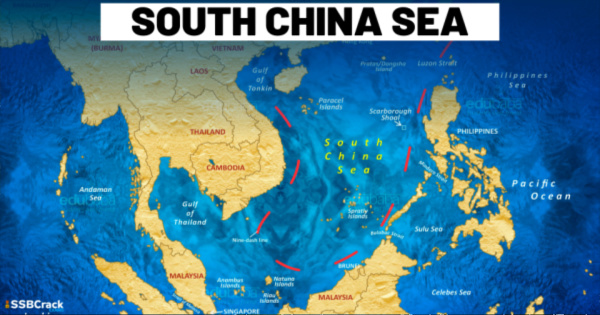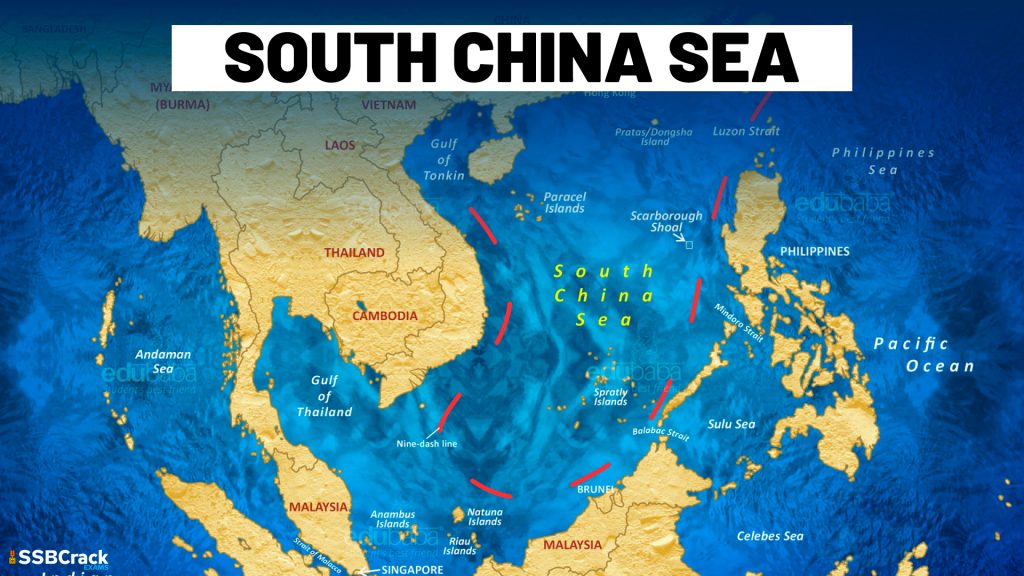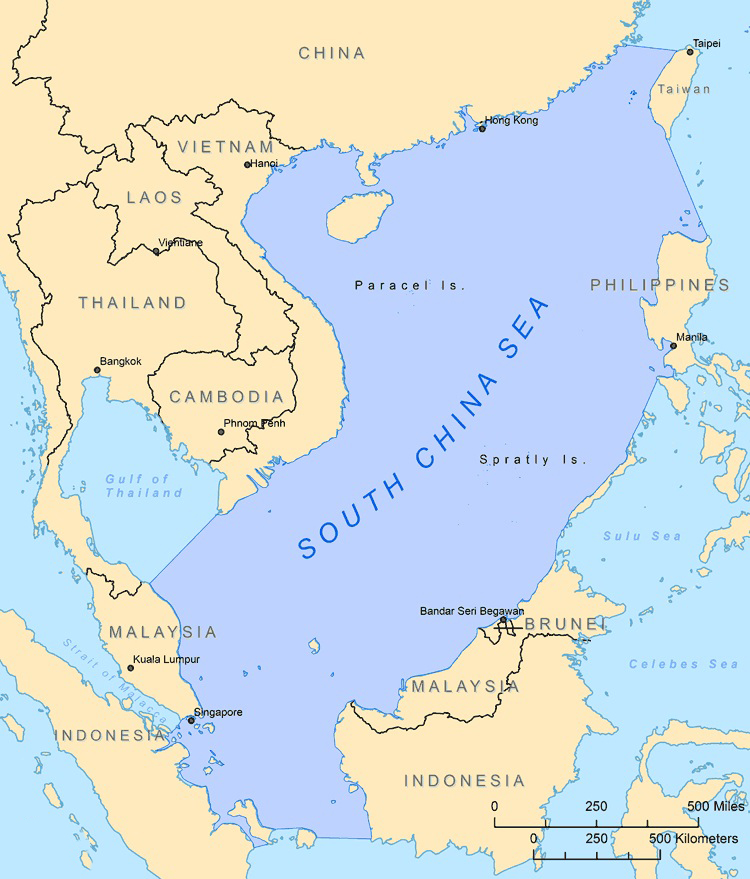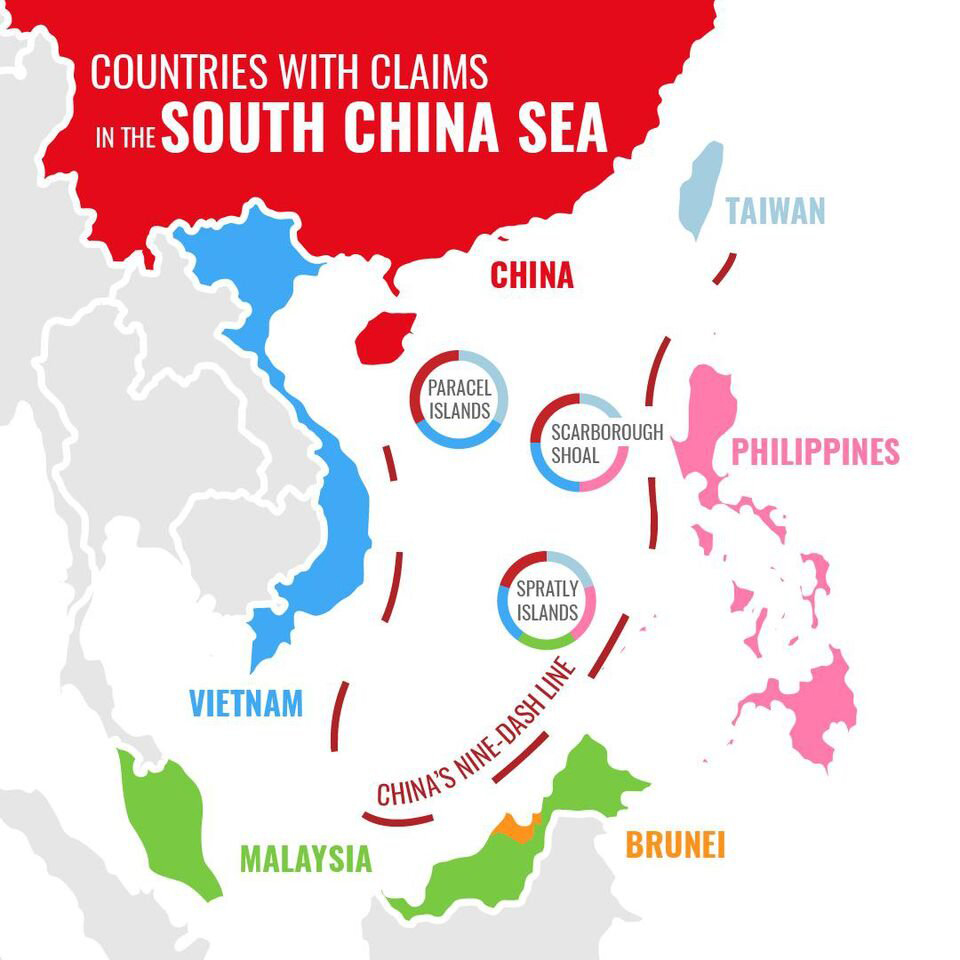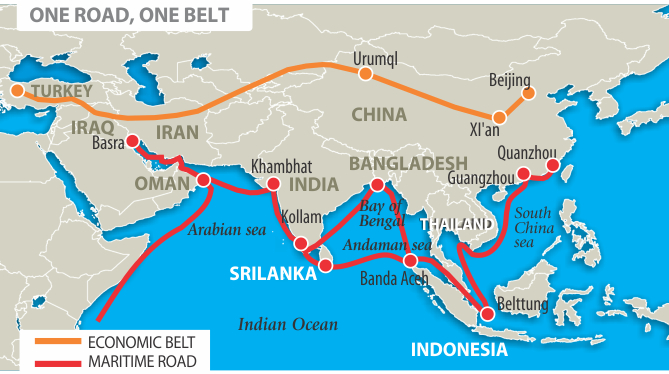South China Sea dispute. This dispute is a complex and controversial issue that has been ongoing for several decades and involves a number of countries in the region.
South China Sea
The South China Sea is a strategically important body of water that encompasses a number of islands, reefs, and shoals, as well as significant shipping lanes and rich fishing grounds. The area is claimed in whole or in part by several countries, including China, Taiwan, the Philippines, Vietnam, Malaysia, and Brunei.
Reason for the Dispute
- At the heart of the dispute is a disagreement over the rights and jurisdiction over the islands, reefs, and shoals in the South China Sea, as well as the rights to the resources, such as oil and gas reserves, that are believed to be beneath the sea floor.
- China’s territorial claims in the South China Sea are among the most expansive, and its efforts to enforce these claims have been met with opposition from other countries in the region, as well as the international community.
- In recent years, tensions have risen in the South China Sea, as China has constructed artificial islands and built military facilities on some of the disputed islands, which has been seen as an attempt to further solidify its territorial claims and assert its dominance in the region.
- This has led to concerns over the risk of conflict in the South China Sea and the potential impact on the stability of the region and the global economy.
Countries Surrounding the South China Sea
- China
- Vietnam
- Philippines
- Island of Borneo
- Malaysia
- Brunei
- Indonesia
- Singapore
Solutions to South China Sea Dispute
- Despite the tensions, there have been efforts to resolve the dispute peacefully. The United Nations Convention on the Law of the Sea provides a framework for resolving disputes over maritime borders and jurisdiction, and a number of countries have sought to use this convention to negotiate a settlement.
- Additionally, regional organizations such as the Association of Southeast Asian Nations (ASEAN) have played a role in promoting dialogue and cooperation among the parties involved.
- Despite not being involved in the dispute, the United States has shown a keen interest in it in recent years. The United States has stated unequivocally that Beijing’s claims to offshore resources across the majority of the South China Sea, as well as its bullying campaign to control them, are completely illegal.
- America, on the other hand, joins other South Asian countries in defending their sovereign rights to offshore resources. Although the United States is working with ASEAN countries, it is believed that the goal is to prevent China from increasing its resources and power.
India and the South China Sea
- Taking India into account, India has always supported ensuring freedom of navigation and resolving disputes in the South China Sea in accordance with UNCLOS, but since the Philippines won the arbitration award in its favor in 2016, India has distanced itself from the dispute.
- Other reasons for India’s withdrawal from the issue include the fact that India is not a party to the region’s maritime territorial disputes, and India wishes to maintain its “Wuhan Consensus” with China.
- The South China Sea is critical to India’s strategic interests. The main one is that if China gains complete control of the sea, it will be able to increase its naval warships and deploy its military in the Asia-Pacific and Indian Ocean regions.
- Not only that, but India has also organized military exercises in the region with Vietnam. India also intends to establish a project in the region with the assistance of Vietnam.
Conclusion
In conclusion, the South China Sea dispute is a complex and challenging issue that requires a peaceful and cooperative resolution. It is important that all parties involved continue to engage in dialogue and work towards finding a peaceful and mutually acceptable solution that takes into account the rights and interests of all parties concerned. Thank you for your time.
Frequently Asked Questions – FAQs
Which country owns the South China Sea?
Territorially, there are seven claimants to the South China Sea: China, Brunei, Indonesia, Malaysia, the Philippines, Taiwan, and Vietnam.
What is the main issue in the South China Sea?
Conflicting island and maritime claims in the South China Sea involve several sovereign states, including Brunei, the People’s Republic of China (PRC), Taiwan (Republic of China/ROC), Indonesia, Malaysia, the Philippines, and Vietnam.
Who benefits from the South China Sea?
The South China Sea is an important trade route in Southeast Asia, connecting waterways from Singapore and Malaysia to Indonesia, the Philippines, and Taiwan.
What natural resources are in the South China Sea?
According to the US Energy Information Agency, the South China Sea contains approximately 190 trillion cubic feet of natural gas and 11 billion barrels of oil in proven and probable reserves, the majority of which lie along the South China Sea’s margins rather than under disputed islets and reefs.
Is the South China Sea part of the Indian Ocean?
The South China Sea is part of the western Pacific Ocean.
How many islands has China built in the south china sea?
China has created 7 artificial Islands in SCS.
To crack the SSB Interview, You can join our SSB interview live classes batch and we recommend you to Enroll SSB INTERVIEW ONLINE COURSE. Trusted by thousands of defence aspirants.
Also Read:
- Socialism Vs Capitalism: SSB Interview Topic [Fully Explained]
- PM Narendra Modi Has Been Named The Most Popular Leader In The World
- India At WEF Davos Summit 2023: Here Are 10 Key Highlights
- Pakistan Economic Crisis 2023: SSB Interview Topic [Fully Explained]
- Joshimath Crisis: What Does “Land Subsidence” Mean, And Why Does It Happen?
- Top 10 Animal Conservation Projects In India [MUST WATCH]
- What Is Shanghai Cooperation Organisation (SCO) Summit 2022? [Fully Explained]
- 20 SSB Interview Questions On Russia Ukraine Crisis
- What Is The (India-Israel-UAE-USA) I2U2 Summit? [Fully Explained]
- What Is International North South Transport Corridor (INSTC)?
- What Is Sri Lankan Crisis? [Fully Explained]
- What Is The BIMSTEC Grouping And How Is It Significant? [EXPLAINED]
- What Is The Places Of Worship (Special Provisions) Act, 1991? [Explained]
- What Is Bodo Accord | SSB Interview Notes [Fully Explained]
- What Is AFSPA: Armed Forces (Special Powers) Act?
- What Is G20 Or Group Of Twenty Countries?
- What Is AFSPA: Armed Forces (Special Powers) Act?
- What Is The Financial Action Task Force (FATF)? [Fully Explained]
- What Is Quadrilateral Security Dialogue (QUAD)?
- Difference Between NATO Vs Russia [Expained]
- What Is United Nations Security Council (UNSC) [Explained]
- Everything You Need To Know About SAARC: South Asian Association For Regional Cooperation
- All About Russia Ukraine War: SSB Interview Topic [Fully Explained]
